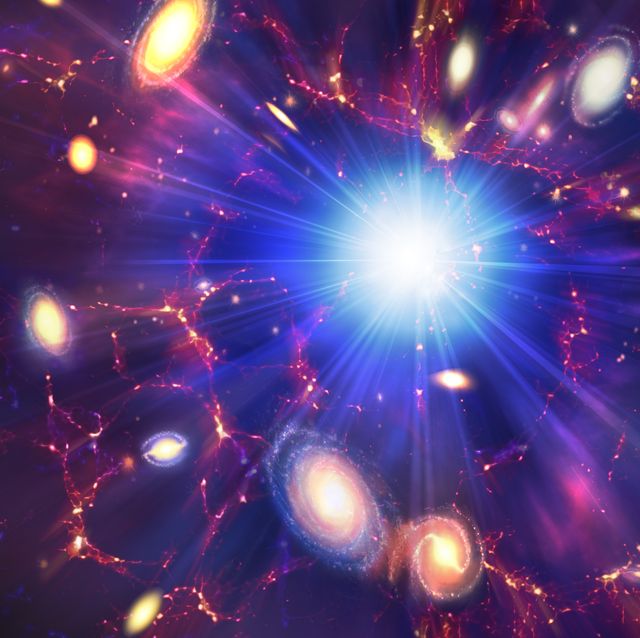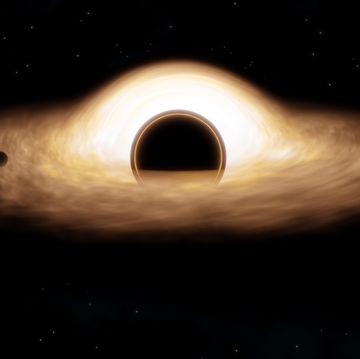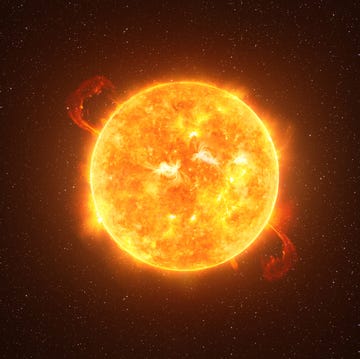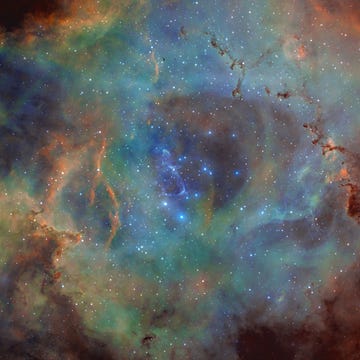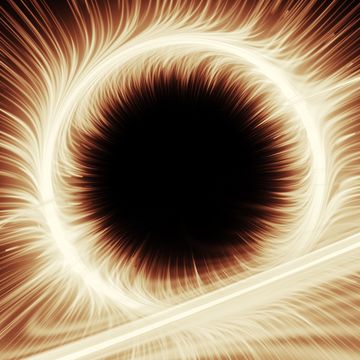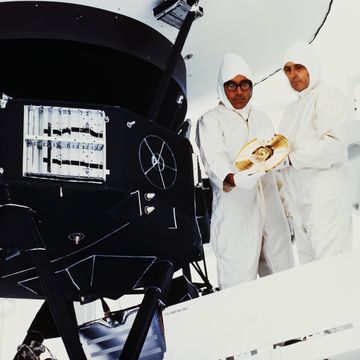- Researchers have recently proposed the idea that we may have had two Big Bangs—one for normal matter and one for mysterious Dark Matter.
- It’s a possible explanation for why we have never seen non-gravitational interactions between dark matter and normal matter.
- If it truly happened, there may have been up to a month between Big Bangs that kicked off the universe.
In the earliest moments of our universe, before galaxies or stars or anything else we recognize had come into being, there was the Big Bang. Matter and energy exploded out of an infinitesimally small and infinitely dense point and expanded rapidly to exponentially larger sizes, creating the building blocks of the universe.
But there are researchers who have now proposed that it’s not where everything started. Because there’s a category of “stuff” that doesn’t really follow the rules of everything else—dark matter.
In a recent preprint, researchers from the University of Texas propose the idea of a second Big Bang, which they call a “Dark Big Bang.” Thought to have happened significantly after the regular Big Bang (which they call the Hot Big Bang), the researchers argue that this could be where dark matter came from.
“It is possible that the creation of ordinary matter and dark matter could instead have happened at different times,” Katherine Freese, one of the lead authors on this study, told Popular Mechanics. “We have no evidence of the existence of dark matter before the epoch of structure formation[…] so it could have been created later.”
We only know dark matter exists because we can see the effects of its gravity. It pulls on the things around it in such a way that we know it’s there, even if we don’t know what it is. But that’s the only interaction we’ve seen, and according to this study, there should be a lot more if dark matter and normal matter were created at the same time.
“If such non-gravitational interactions existed one would expect the Hot Big Bang to produce not only the visible matter and radiation, but also the dark matter,” said Martin Winkler, the other lead author on this study.
But, Winkler told Popular Mechanics, “despite enormous experimental efforts for decades, no non-gravitational interactions of dark matter have been detected. If gravity is the only force between dark and visible matter (or if only extremely weak non-gravitational forces exist between them), there is no reason for the Hot Big Bang to produce the dark matter.”
So, the researchers proposed that a second Big Bang, a Dark Big Bang, may have produced the dark matter up to a month after the Hot Big Bang produced everything else. It would have created a burst of hot, dark plasma that eventually bubbled out into dark particles, just like we imagine the regular Big Bang would have created the particles with which scientists are already familiar.
Right now, this is just a theory meant to ask cosmologists to consider other explanations of the phenomena we see in the echoes of the earliest Universe. But it may soon be testable. Freese and Winkler expect that the next generation of gravitational wave detectors could be strong enough to spot the signal of a Dark Big Bang (if it really happened), and believe there may have already been a signal captured by the NanoGrav pulsar timing array that points in a Dark Big Bang direction.
But these researchers are quick to say their theory could be disproven as well. If there is ever any kind of non-gravitational interaction discovered between dark and regular matter, it would mean they must have been produced in the same Big Bang, wiping the Dark Big Bang theory off the map.
Either way, it’s another avenue to explore. And when you’re dealing with something as mysterious as dark matter, you need all the avenues
Jackie is a writer and editor from Pennsylvania. She's especially fond of writing about space and physics, and loves sharing the weird wonders of the universe with anyone who wants to listen. She is supervised in her home office by her two cats.
